Introduction
Getting your internal communications right can be challenging. It’s all fun and games when sharing business wins and employee success - but what happens when tough times arise, and bad news needs to be raised? If such messages are to land in a way that doesn’t offend, they need to be communicated credibly, empathetically, and authentically.
The modern workforce is evolving. Employees place ever greater emphasis on their mental health and wellbeing, the values of the business they work for, and feeling that the work they do is purposeful. This has already driven the evolution of hybrid working practices and employer brands, and now it’s the turn of your internal communications.
In this report, we’ve turned our attention towards resolving the sorts of internal communications challenges that we hear all too often from our clients and their peers. These include:
- Communicating authentically in testing times
- Navigating the communication of change during and after a merger
- Engaging with deskless and remote employees in the modern workplace
- Creating internal comms that aren’t too much of time, budget, and resource commitment
- Connecting with a cross-generational workforce
- Using internal communications to improve hiring and retention
Sound familiar? Don’t worry. We’ve collaborated with industry experts to create a report that provides helpful insights and practical advice to power up your internal communications.
A major takeaway is the role that video can and should be playing in the modern internal communications strategy - and that’s where Seenit comes in. As the go-to choice for employee-generated video content, our goal is to create a more trustworthy world where everyone’s voice is heard and authentic human stories can be told in impactful ways.
We hope you find this report useful. If you’d like to discuss the topics in more detail or learn how to bring your organisational purpose with Seenit, please feel free to reach out to our team.
Freddy Cleveley, VP Customer Success, Seenit
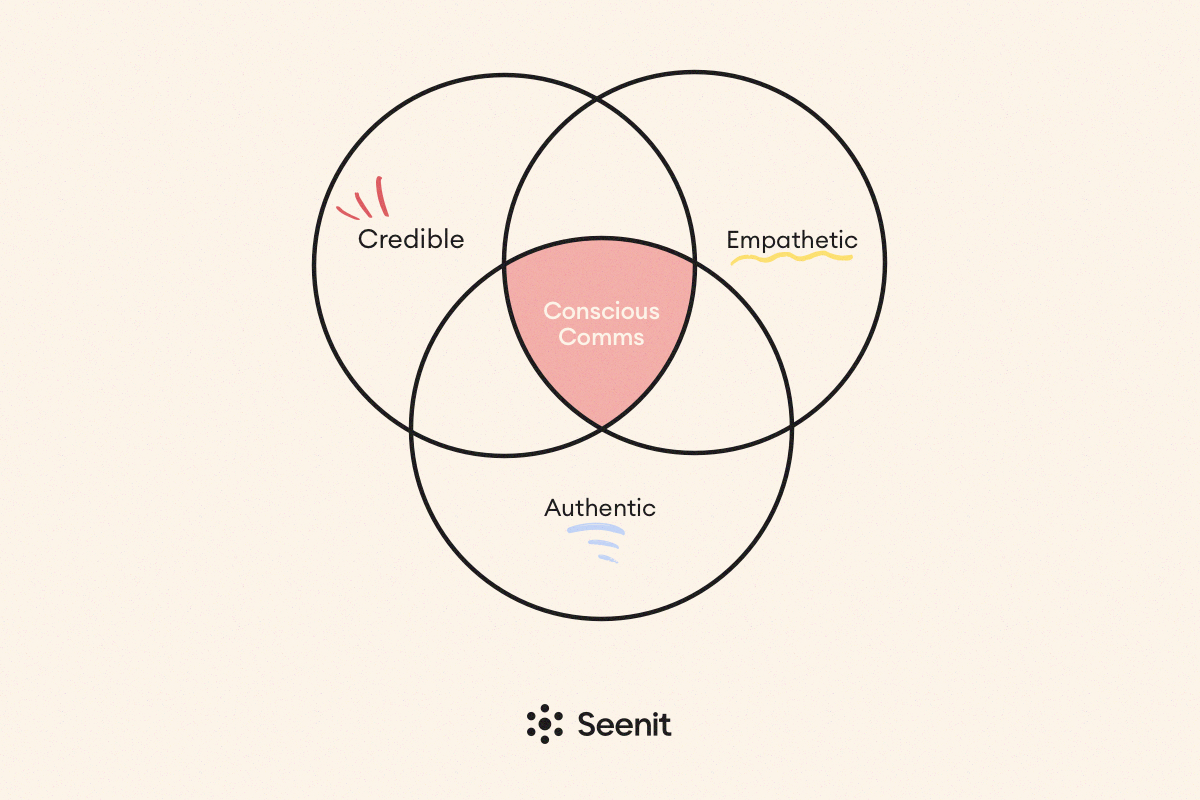
Heard it on the grapevine
What’s preventing organisations from communicating consciously?
In the modern workplace, one size doesn’t fit all - especially when it comes to internal communications. Situations can change rapidly, as we’ve experienced in recent years, so having a robust comms strategy in place is crucial if you’re to successfully navigate disruption.
However, disruption can take many forms, which is why we’ve identified six key communications challenges that we hear time and again from industry experts. In this article, we’ll dig into these challenges to better understand them and provide practical advice and examples on how best to overcome them.
1. Authentic comms in testing times
What we hear on the grapevine…
How can we better communicate challenging news?
The challenge
Having difficult conversations with employees can be, well…difficult! While organisations love to amplify good news, it’s essential that those in leadership roles can communicate effectively, empathetically, and authentically when times are tough.
Given the upheaval of the past few years, more and more organisations are having to have difficult conversations around job losses, hiring freezes, and slowing growth.
64% of internal comms professionals say the cost of living crisis poses a challenge when communicating with employees. Whilst half say the recession is a major challenge.
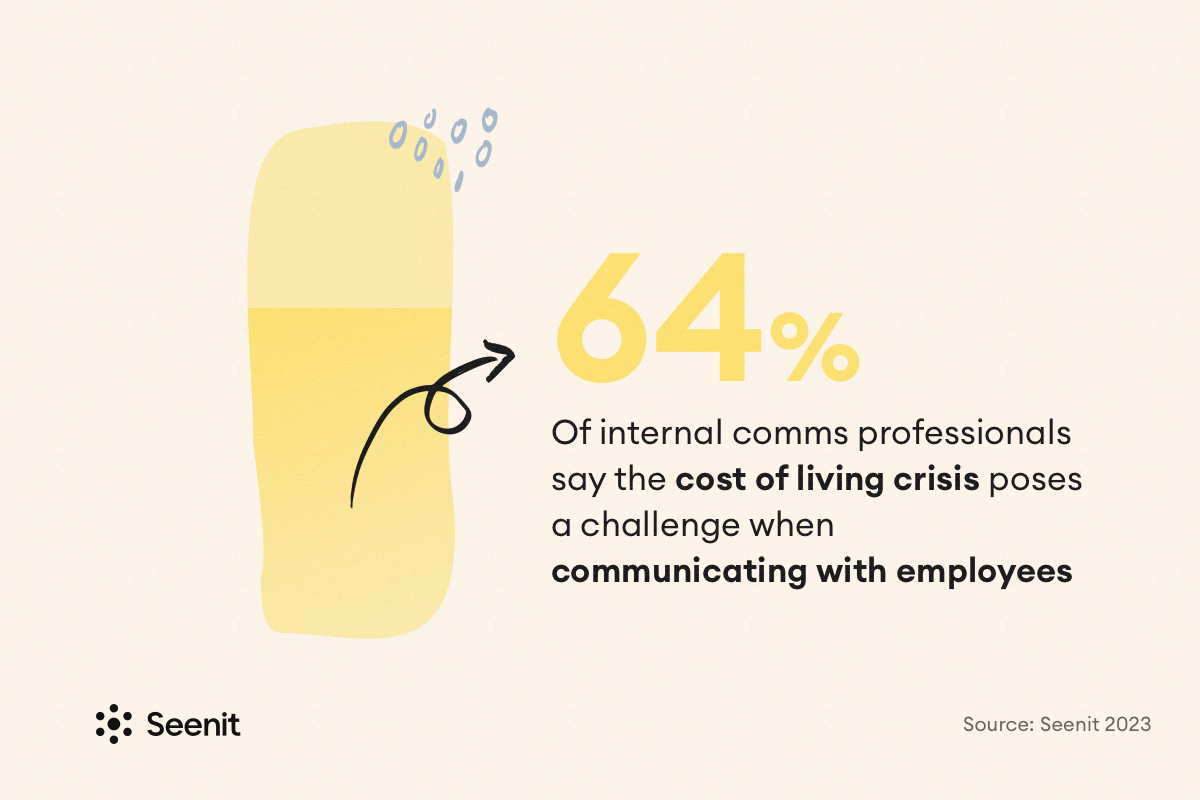
We’ve seen plenty of examples in the news about how not to have these conversations, with employees laid off over Slack or simply locked out of their email accounts.
Get your difficult comms wrong and expect to see a negative impact on company culture, business reputation, morale, and engagement among existing employees.
Why you need to get it right
Your goal should be to keep employees informed and the organisation aligned by coordinating communications coming from HR, IC, and Leadership teams during tough times.
“As senior comms people, we have a role to play in giving leaders a candid assessment of how things might land. A truly strategic internal comms function needs to act as the eyes, ears and voice for employees.”
Tor Goldfield, Senior Director, Internal Communications, Expedia Group
But communicate bad news authentically and empathetically, and the benefits are myriad. Get your comms right and you’ll:
- Build greater trust between leadership and the workforce
- Create a stronger, more authentic culture
- Reduce disengagement among workers
- Develop a better understanding of what, how, and when to share bad news that might arise down the road
How to tackle
When you need to deliver bad news, it needs to be handled well and can be a real test of leadership skills. Comms must be accountable, courageous and have credibility. Try to immediately clarify what the news means for your employee(s) and the wider business, then explain the reasons behind it. We’ve come up with a handy framework to “PEEL” your message:
- Planning; know what you want to say and the rationale behind it
- Explain; be honest and transparent, avoid corporate jargon, and keep employees in the loop without sugar-coating news to avoid miscommunications
- Empathise; talk to people like people, show empathy, and don’t minimise or neglect any potential emotional responses
- Long-term; bad news doesn’t need to cast a lasting shadow, so consider what comes next in terms of actions or timelines to maintain as positive a relationship as possible.
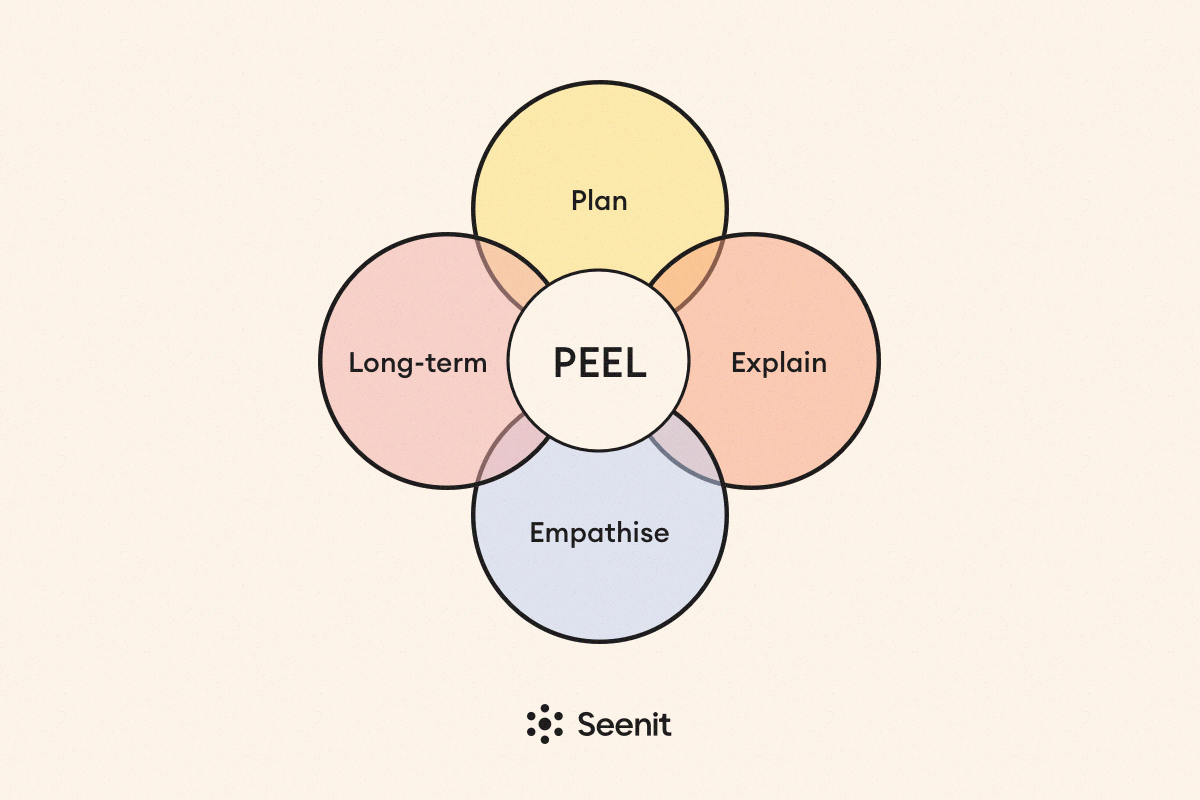
It can take time to process difficult news, so it’s worth scheduling follow up meetings or check-ins to allow employees time to absorb information and then ask questions.
The Seenit approach
Video can be a powerful way of communicating difficult news, enabling leadership to communicate openly, honestly, and directly to the company in a visceral way - seeing and hearing empathy in someone’s voice will beat bad news by email any day.
In fact, viewers retain 95% of a message when they watch it in a video, compared to 10% when reading.
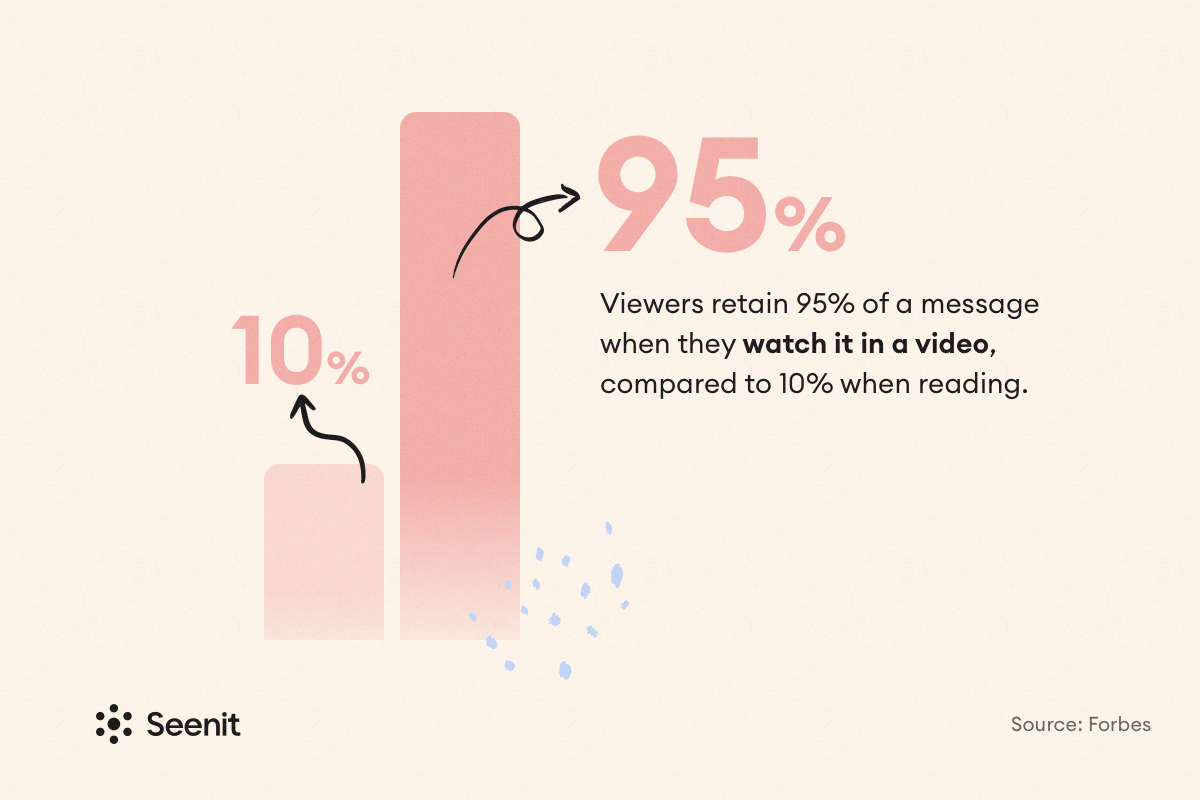
“We helped our CEO to create regular video blogs to introduce him during the pandemic. It was transformational in creating a human and authentic connection with employees, which words on a page couldn’t have done.”
Helen Kelley, Internal Communications and Engagement Director, Inmarsat
While some conversations will need to be conducted one-on-one, approaching difficult topics via video can help you to answer employee questions, address concerns directly, control the narrative and give a more authentic and personal feel that may be lost through other channels.
2. Communicating change during mergers & acquisitions
What we hear on the grapevine…
How can we better navigate communicating change during and after a merger?
The challenge
Going through a merger can be an exceptionally disruptive period in an organisation’s lifecycle - so it’s no surprise that 70% of change programs fail, according to research from McKinsey. So it’s important to take talent on a positive journey and improve internal acceptance of a merger if you are to successfully integrate people and processes.
But navigating uncharted waters isn’t easy. Get it wrong and it can have negative knock-on effects to company culture, lead to rumours that undermine employee trust and happiness, and make it challenging for all firms involved to find their place in the new combined entity.
39% of surveyed employees believe that people in their own organisation don’t collaborate enough with 33% of employees saying a lack of open, honest communication has the most negative impact on employee morale.
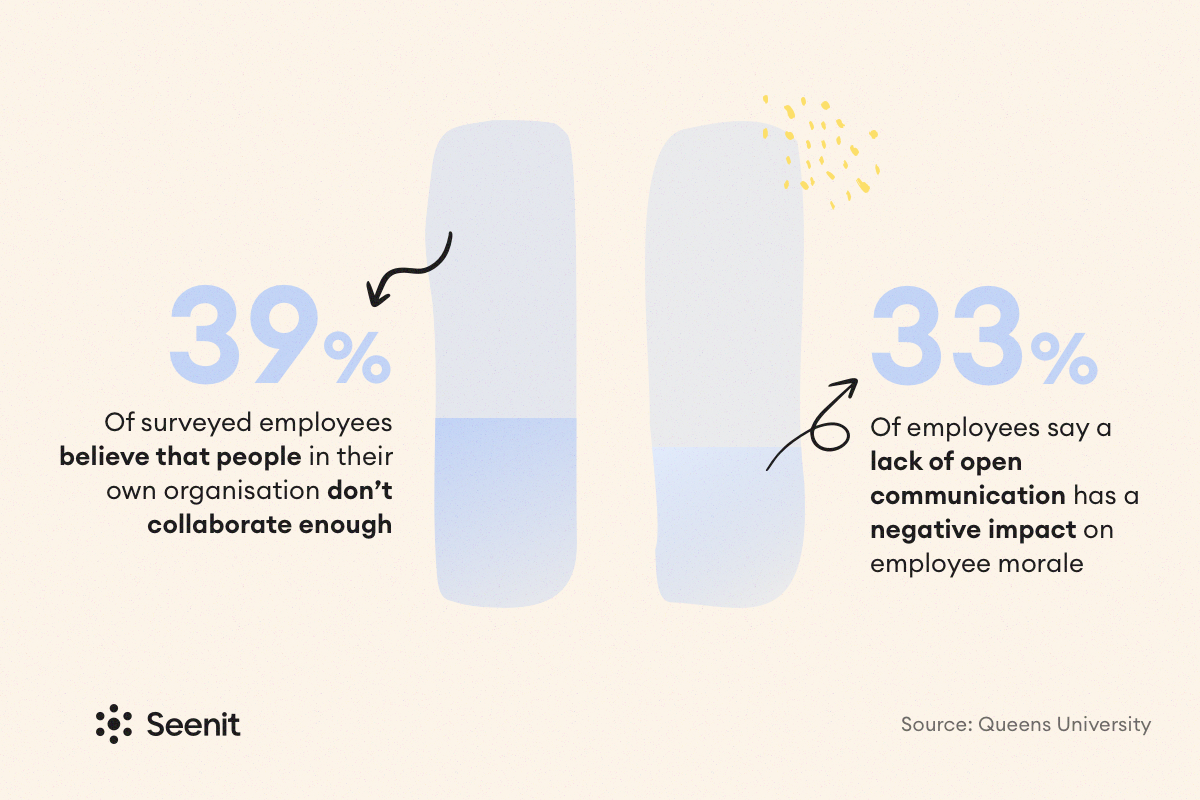
As one of the first workstreams likely to be pushed live as soon as a deal is discussed, structured internal communications can play a crucial role in minimising distractions and creating a solid foundation for future success.
Why you need to get it right
“Internal comms has got a really big role to play in terms of bringing people together and creating a sense of a global and combined team. Mergers can take time and while providing lots of opportunities for employees, they can create a lot of uncertainty as well and it can be hard keeping people engaged.”
Helen Kelley, Internal Communications and Engagement Director, Inmarsat
Planning effective and engaging internal comms during an M&A process can make a big difference to employee wellbeing:
- Sharing information reduces uncertainty and builds trust
- Pragmatic and proactive internal comms can help to control the narrative, mitigate potential rumours, and improve buy-in and retention of top talent
- Consistent, authentic, and conscious comms will serve to cultivate and reaffirm your company culture
- Building a habit of open communication will improve post-deal integration
How to tackle
It’s best to embrace a position of authenticity and transparency when communicating M&A related changes to your organisation. While you and the other businesses involved will likely have differing cultures, where possible try to adopt a unified position to lay the groundwork for a possible shared culture post-integration.
Take your time here, or you may inadvertently end up in the same situation as AOL and Time Warner, whose clashing cultures of new media and old media proved largely incompatible and led to difficult integration and underwhelming results post-merger.
“One of the hardest things to do is tell a story about change in the organisations. You need to tell the story about where we’ve come from and where we’re going. Consider building a Change Champions network across the business to ensure messaging is both coming down from leadership as well as up from the bottom from employee voices as well.”
David Orford, Communications Transformation Consultant in the banking sector
Look to establish a clear, cross-channel comms strategy approved by leadership on all sides that ensures a consistent flow of information to employees about the process, the impact, the integration, and beyond.
The Seenit approach
Considering embracing the ‘Ask Me Anything’ (AMA) format to answer questions and ensure that employees feel involved and engaged during a merger. Keeping in mind that 81 percent of professionals like when the CEOs and leadership speak out on issues they care about. Hosting an AMA with senior leaders in the business can be a powerful way of learning what employees have queries about, rather than comms teams simply guessing.
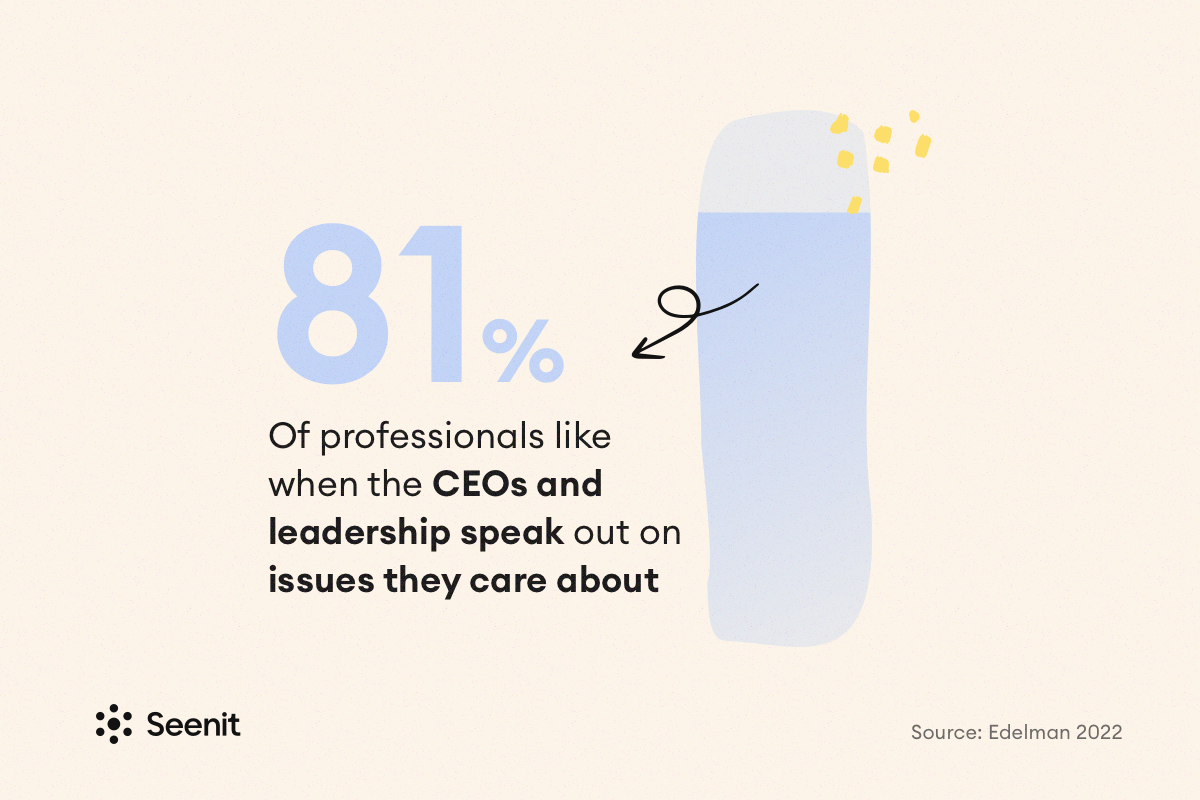
Record the answers from the AMA in the Seenit platform and you can create a digital hub where employees can find short video answers to their biggest questions around the merger.
This provides senior leadership with a great opportunity to communicate consciously and authentically, and to take all employees on the journey with them.
3. Navigating deskless employees and the modern work environment
What we hear on the grapevine…
How can we demonstrate our culture and employer brand through internal comms when our employees are deskless, remote, or hybrid workers?
The challenge
It’s no secret that the world of work is evolving rapidly as a result of unprecedented disruption in recent years. Workplace technology has accelerated, enabling employees to be based further afield than ever before.
But when teams may be disparate and spread across the globe, it can be hard to keep them engaged and invested in both your company culture and employer brand.
A 2022 survey by the insurance consultancy Gallagher found that one-in-five of the Internal Comms professionals surveyed said that their current channel strategy wasn’t fit for purpose in a hybrid and remote workplace. Likewise, not all employees may have access to - or pay attention to - the same communication channels.
“We need to be conscious of whether people are in the right environment. Sometimes even the simple act of having to go and get headphones then put them in to watch or listen to content can be a blocker.”
Tor Goldfield, Senior Director, Internal Communications, Expedia Group
Over time, this lack of face-time, lack of access, and lack of variety in communication channels can eat away at the motivation and engagement of deskless and remote employees.
Why you need to get it right
According to studies, 60% of companies don’t have a long-term internal comms strategy. With hybrid or remote work no longer a nice to have but a must have, it’s likely that a substantial proportion of your employees aren’t in the same office - or even the same country.
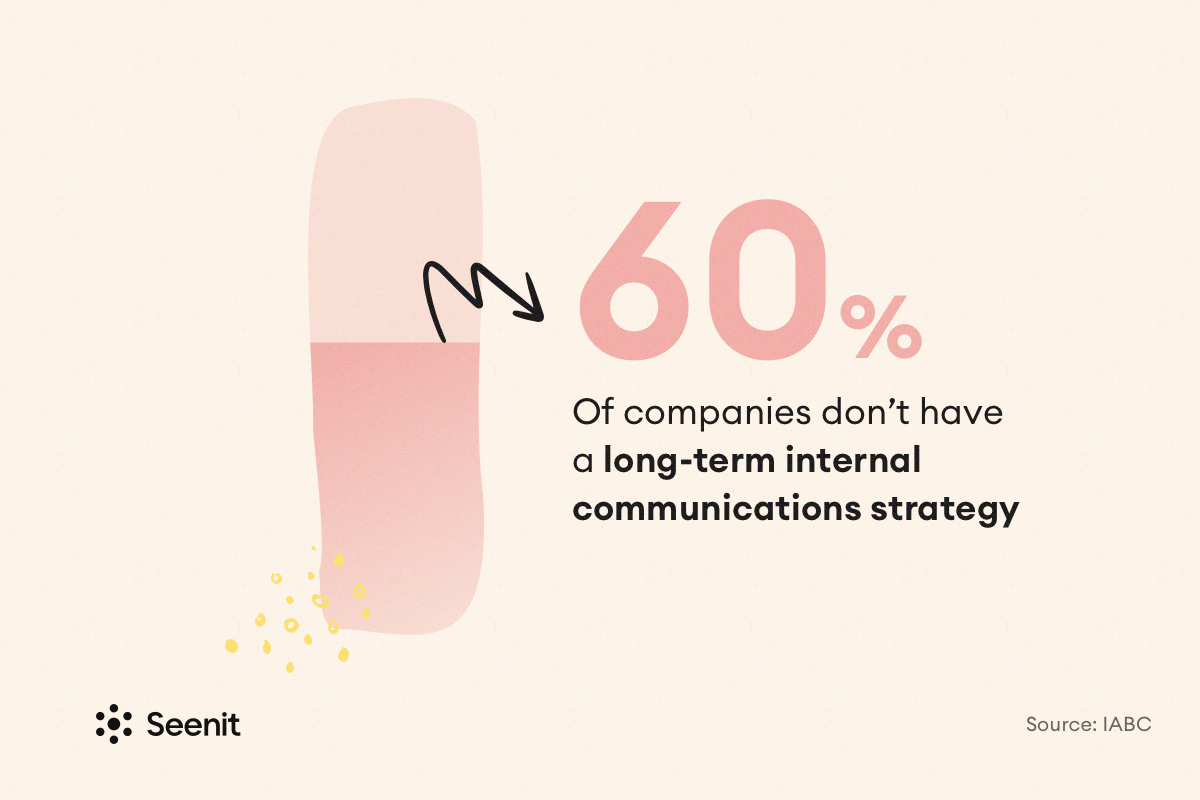
Establishing an internal comms strategy that caters to all can lead to a wide-range of benefits, including higher engagement, motivation, and productivity; improved retention of talent; a more tangible culture; more trusting relationships between employees and leadership; a demonstrable employer brand that can improve future hiring.
How to tackle
When it comes to deskless employees, it’s essential that your internal comms reach them where they are - which means understanding how and where your employees consume information. This can be a challenge, so it pays to approach things strategically.
"It sounds simple but pick the right goals to focus on, you need to be realistic about what you can achieve. Prioritise and focus on the outcomes of the problems you’re solving. If you want to reach deskless employees, be really clear about what you're going to do - and what the outcome looks like."
Jenni Field, Founder and CEO at Redefining Communications
Research suggests 9-in-10 employees use their mobile phones during work hours, with 60% using their phone for work-related tasks. With this in mind, consider how best to utilise relevant apps to ensure access to comms on the go and the formats that work best on tools such as Slack or Teams for team/project messages, or HR apps such as hiBob for business-wide comms.
Work to identify what the impact of comms with deskless employees should be (rather than views for the sake of it!), then focus your energies on the channels that deliver the best results.
Try to be proactive in maintaining the conversation with deskless employees in as human a way as possible, which may mean upskilling internal managers to better equip them with the tools to be great communicators.
The Seenit approach
Almost half of employees say that video is the most engaging form of communication, as well as a time-saver compared to reading lengthy email communications. So why not embrace the video revolution?
Remote employees often want to feel more involved and part of the wider business, so consider inviting deskless champions to share their approach to success, or what keeps them motivated, in short-form UGC videos through Seenit, and then socialise with the business to build relatability and buy-in.
“Video gives us a real way to bring in more employee voices. We’re not constrained by where they are and it means we can foster that sense of a wider international community through the stories that they can tell.”
Helen Kelley, Internal Communications and Engagement Director, Inmarsat
Doing so can improve communication across the business, foster inter-team relationships, demonstrate and reaffirm your culture, and keep talent on board - wherever they are based.
Some key stats you should know
4. Internal communications are a time and resource burden
What we hear on the grapevine…
Internal communications are too much of a budget, time, and resource commitment.
We want to reduce the complexity of internal comms processes and make it easier to create content.
The challenge
During difficult periods, it can be all too easy to focus budgets and efforts on critical business priorities, while internal communications get pushed to one side, seen as too resource intensive. But this can be shortsighted.
Employees are an organisation’s most valuable asset and so it’s more important than ever to keep them informed, engaged, and motivated - even if your Internal Comms function is a small one in a big business. Remember that the cost to replace a highly-trained employee can exceed 200% of their annual salary. And employees are 87% less likely to quit a job if they are engaged in the workplace.
With a challenging economic climate and tightening budgets, it’s all hands on deck for internal comms teams, who need to get creative if they intend to make an impact.
Why you need to get it right
While resources might be tight, it pays to invest in activity that engages employees and keeps them informed. Data from the Workplace Research Foundation indicates that boosting employee engagement investments by just 10% can increase organisational profits by up to £2,000 per employee per year.
Internal comms can play a cost-effective role in growing engagement and helping to deliver wider business objectives - but it needs to be considered strategically if resources are to be optimised.
“It’s easy to overcomplicate things in communications and get overwhelmed, ask yourself what the purpose of your internal comms function is to ground yourself. Otherwise, you’ll end up reacting to whoever shouts loudest.”
Jenni Field, Founder and CEO at Redefining Communications
A coherent strategy can help align competing voices and streamline the creation of comms content. It’s also a great way to build relationships and impress the value of the IC function across the business.
“It pays to develop your soft skills, your ability to build strong relationships, your ability to build a network, and navigate your way around the business effectively. Being able to operate effectively within the business is as important as having strong tactical capabilities.”
Tor Goldfield, Senior Director, Internal Communications, Expedia Group
How to tackle
Leveraging technology and software can be a savvy way of enabling the rapid and resource-effective creation of internal comms content. However, tech can sometimes cost more than we’d like - so consider the resources at your disposal smartly and strategically with a clear goal in mind.
“There’s an overwhelming amount of information that employees are dealing with. The way to deal with this is to focus your communications and make it into a campaign in which you’ll focus on a specific topic, rather than everything, and really try to move the dial on that.”
David Orford, Communications Transformation Consultant in the banking sector
Focus on the intended outcome of internal comms and then track and audit the tech and channels available to you, scoring their performance against your core needs. It’s also worth researching whether there are more affordable options available to you (e.g. such as Yammer or Google Hangouts).
Keep reviewing and optimising and you’ll quickly fine-tune your strategy, simplify processes, and streamline your tech spend.
The Seenit approach
Think of Seenit as your one-stop station for internal communications, enabling you to create, share, and track engagement metrics in one place - without breaking the bank.
We empower internal comms teams to create high-impact, user-generated video content that makes the most of the talent at your disposal, and do so in a more cost-effective and innovative manner.
From sharing employee stories and best practice tips, leadership announcements to creating educational hubs, together we can make it easier to communicate with authenticity and to do so in a way that makes an impact.
5. Connecting with a cross-generational workforce
What we hear on the grapevine…
Our internal comms content isn’t fun and feels staged.
We don’t know how to create IC content that lands well with employees of different ages.
The challenge
We hear a lot these days about how Gen Z employees engage with the workplace in a drastically different manner compared to their older colleagues. Yet this does the real challenge a disservice.
For many internal comms teams, the real challenge lies in communicating effectively and authentically across generations.
“The communications function has to consider how people consume content in their personal lives and think about how to make that work within the organisation. In general, that means a shift away from long-form writing towards short-form user-generated video.”
Peter Tilley, Communications Director, Rubix
So, rather than box employees into a one-size-fits-all approach, you need to work out how best to engage and interact authentically with employees of different ages and backgrounds in a way that they buy into. If not, you run the risk of wasting time, energy, and resources on comms that not only don’t make an impact - but might not even be read!
Why you need to get it right
While younger employees will feel confident navigating around apps like Slack on their mobile phone, older employees may be more inclined towards using their work laptop for business comms.
“Gen Z are the first generation to grow up with the speed, ease and interactivity of technology as normal - and this does make them different to previous generations. But everyone was impacted by the pandemic, so it’s better to layer personality types over more general generational requests when it comes to comms.”
Jenni Field, Founder and CEO at Redefining Communications
A clear comms strategy should focus on sharing relevant and dynamic content that goes beyond text communication. Doing so will help you bypass generational differences, driving greater engagement and buy-in among all employees, while also promoting authentic and diverse voices across the business.
How to tackle
Don’t feel limited to digital channels and text-based comms only as in-person communication can come across as more authentic and sincere, making your workforce feel seen, involved and recognised.
Work to identify the channels and types of communication that will cross the generational divide and help you to share engaging content that doesn’t feel forced.
That means embracing content that adds value and drives an outcome - but without taking up too much of the working day. Bite-sized comms content can be a powerful tool in this regard, enabling you to capture attention across the organisation more consistently while being quicker and easier to produce.
The Seenit approach
Video content should make up the backbone of any modern internal comms strategy. After all, it’s deemed the most engaging form of content by 48% of employees with 59% preferring short-form video content over long-form.
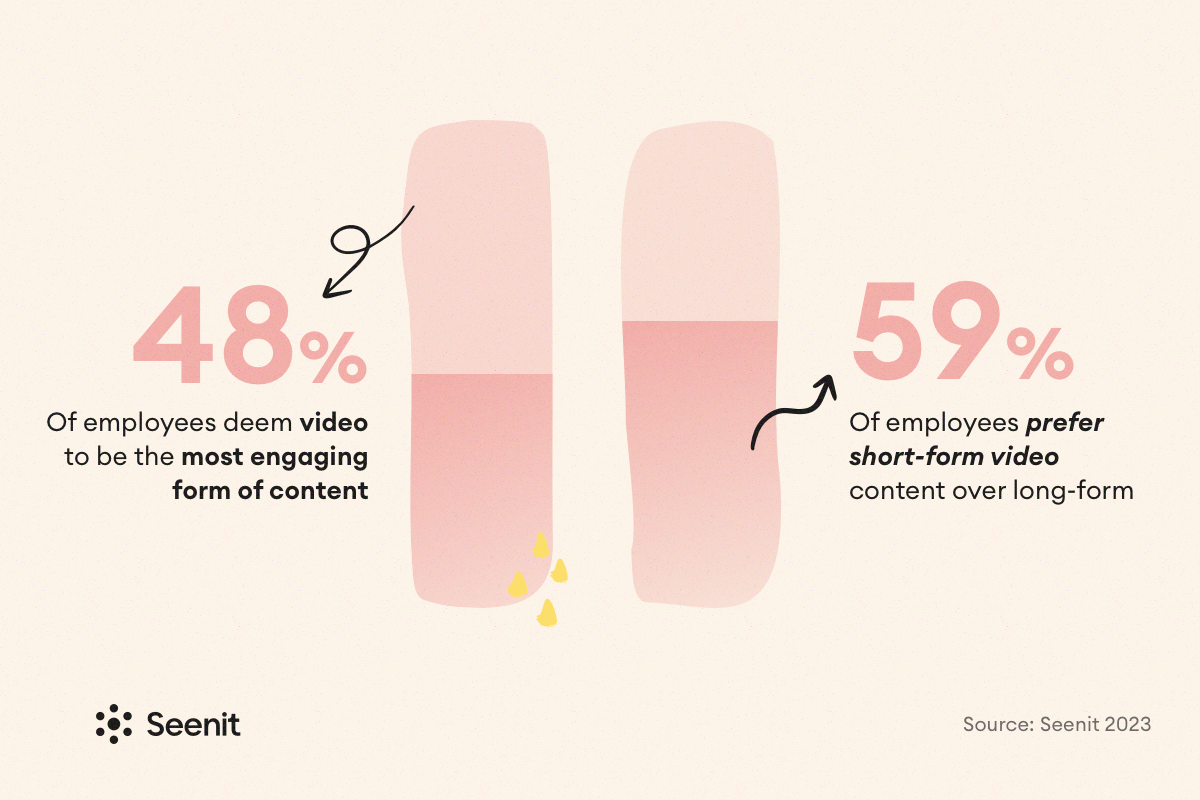
With 1-in-2 employees in favour of video, Seenit equips you with the ability to easily create bite-sized video content that promotes a people-first approach to internal communications. In other words, that means video content created in-house by your employees for your employees.
By focusing your efforts on authentic, relatable, and dynamic video content that cuts through, you’ll empower your employees to help drive better engagement among their peers regardless of age.
6. Communications to support retention and hiring
What we hear on the grapevine…
We struggle to amplify D&I and show why people should work here.
How can our comms improve engagement and mitigate quiet and conscious quitting?
The challenge
Standing out in a busy market can make recruitment challenging. With so many competing voices, why should potential employees listen to your communications over another organisation’s?
Likewise, with so much noise going on, it can be all too easy for existing employees to have their heads turned and move on to pastures new - especially if they’re not kept up to date and informed of what’s happening across the business.
Why you need to get it right
The modern workforce puts an increasing emphasis on the importance of a company’s culture and values, employee benefits, working policies and environment, and inclusion initiatives. Amidst the upheaval of recent years, we’ve seen people starting to seek greater purpose in the work that they do. Unfortunately, only 23% of executives say that their companies are excellent at aligning employees’ goals with corporate purposes.
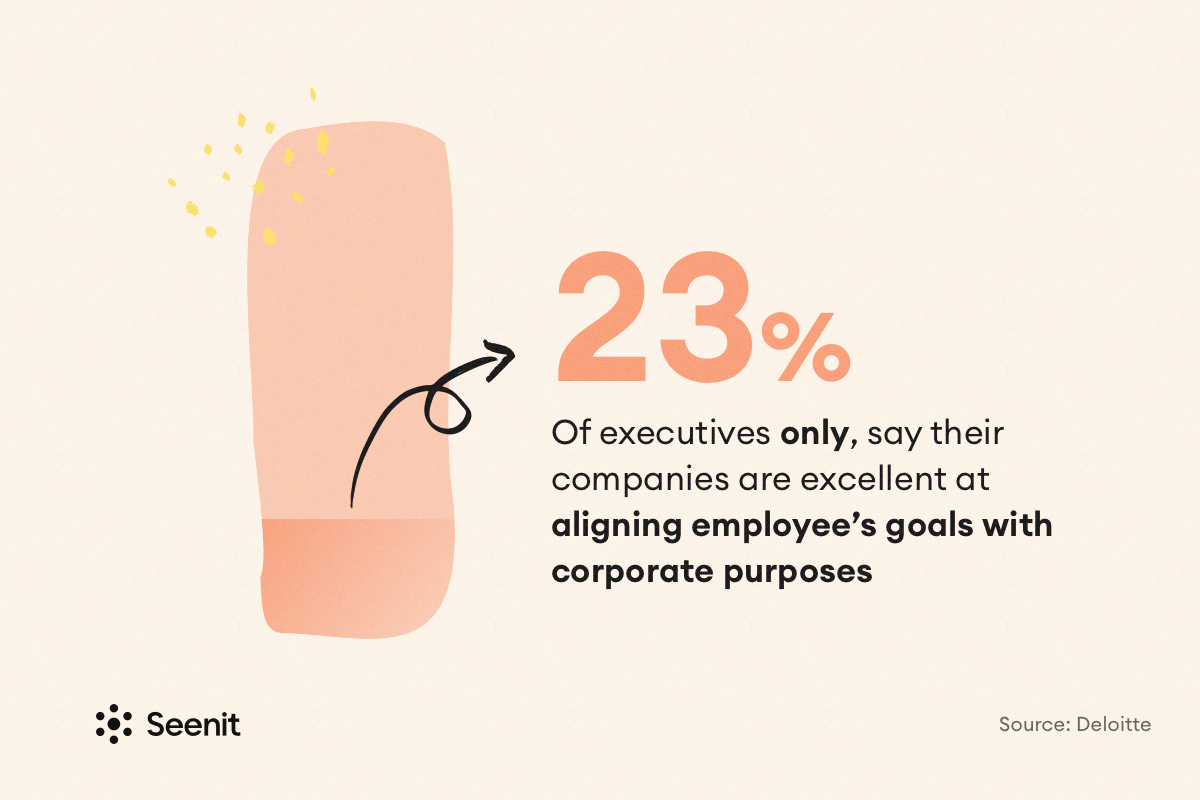
If you’re unable to satisfy these more purposeful and substantial needs, then it’s likely that talent will look elsewhere for opportunities.
But if you can successfully implement these elements and effectively communicate them inside the business and out, then you’ll be sharing a powerful message about what you stand for that will improve perceptions among current and prospective employees.
How to tackle
PwC’s 2022 Hopes and Fears workforce survey found that three of the top five most important factors affecting whether an employee stays or leaves are finding the job fulfilling, the ability to truly be yourself and feeling like the team cares about your wellbeing.
These are very personal factors and internal comms teams will need a clear strategy in place to address them in a meaningful way. Employees want to be recognised and to feel connected to the broader purpose of the business, and businesses that can communicate this will attract and retain the best talent.
While the exact approach will vary depending on individual company cultures, a good place to start is to:
- Clearly and consistently communicate the company’s values and missions (and continue to relate business activity back to these guiding principles)
- Proactively share information and updates about employee benefits and perks
- Prominently highlight and celebrate employee achievements and success
Work at developing a culture comfortable with feedback, where employees feel empowered to speak up
The Seenit approach
Sharing real life stories is a great way of shining a light on someone’s personal narrative and has the added benefit of giving prospective talent a little sneak peak of what life in the business is like, professionally and culturally.
“We like to tell stories about career development and how people have grown their career. And it's always the videos that perform best because of the richness of the media. It’s important to use the employee voice to drive engagement.”
Helen Kelley, Internal Communications and Engagement Director, Inmarsat
While user-generated video content can be a low-cost, high-impact exercise, it still requires conscientious planning and maintenance. Try to foster a community of contributors across seniority, location, and function to spread the creative load and ensure a steady cadence of engaging video comms content.
Tuning in to internal comms (Case study)
The challenge
Rubix is Europe’s largest supplier of industrial maintenance, repair and overhaul (MRO) products and services. With employees based across Europe, Peter Tilley was brought in from heading up corporate comms at Royal Mail to be the Group’s first communications director.
As the organisation was newly formed – following a merger – it was early days for the communications function. There was an over-reliance on written communications shared by email as well as language barriers and a disengaged workforce to contend with.
"It was clear that we needed to call time on the newsletter. I wanted to move to short-form video, I wanted it to be user-generated, and I wanted the stars of the show to be the people who were dealing with our customers every day. Even if the production quality was low. I knew it would be high on authenticity. That’s exactly where the balance needs to be for effective employee communication."
Peter Tilley, Communications Director, Rubix
The solution
The thinking was to get Rubix to a place where communication within the organisation mirrored much more closely how employees were communicating and consuming content outside of work.
This required a new way of thinking about internal comms, which led to Rubix TV. Effectively a branded, mini, in-house television channel, Rubix TV is powered by Seenit and allows Peter and his colleagues to produce and promote video content captured by employees from across the business.
"The whole approach is built around the end product we want – engaging, memorable and repeatable stories that make sense of corporate strategy."
Peter Tilley, Communications Director, Rubix
Peter’s aim of creating and sharing short-form, user-generated video content meant winning employees over, which meant keeping the process of video capture and editing simple and straightforward - if not for them, then for himself.
“Seenit makes it very easy for our people to submit content, which means we get what we need to tell the story we want to tell. It’s a very small team here and we’ve been learning as we go but the tutorials and account management support from Seenit make the editing process very easy. Our contributors are usually pleasantly surprised at what the edited version of it looks like."
Peter Tilley, Communications Director, Rubix
The outcome
Rubix TV has been rigorously tested by Peter. From a pilot episode reviewed by 1,000 colleagues across the organisation (the majority of whom were overwhelmingly positive) to specific requests for feedback in the annual employee engagement survey, Peter isn’t resting on his laurels.
“We correlate responses to questions about communications initiatives to overall levels of engagement, and then correlate employee engagement to customer satisfaction and financial performance. This allows us to track the impact of our work on the business, ensuring that we continue to create value.”
Peter Tilley, Communications Director, Rubix
The employee net promoter score has risen 57 points since 2018. Now, Rubix TV is set to push the rise in engagement even further. With the programme growing and employees increasingly tuning-in, Peter is working with the leadership team on how to continue building its presence within the organisation.
Next steps
It’s clear that internal communications is having its ‘moment’ in the sun. The need to keep employees on-board, informed, and engaged is more pressing than ever, but traditional methods of communication are feeling tired and a bit passé. Technology is helping drive innovation in internal comms, providing more formats, channels, and metrics - but this shouldn’t come at the expense of the soul of your comms.
Authenticity, credibility, and empathy are now important tools in your arsenal when trying to communicate consciously. After all, wanting to enjoy work isn’t limited to one generation more than another. Everybody wants to work with purpose and to buy-in to their employer brand and values - and establishing internal communications that resonate can be a valuable asset in this regard.
Clearly video has a role to play in this more forward-thinking internal communications strategy - but it doesn’t have to break the bank. Seenit offers a resource-effective solution to creating and sharing employee-generated video content, helping you to get creative, leverage the resources available to you, and take employees on the journey with you as your advocates.
Want to learn more about fine-tuning your internal communications, communicating more consciously, or making the most of video content? Reach out to the Seenit team or visit our website today.
About Seenit
With 74% of employees feeling they miss out on company updates, and attention spans reaching new lows, the fight for your colleagues’ time is on.
Comms teams must look for new tools and channels to break through the noise and deliver timely, effective, and human communications. That’s where we can help. Seenit is the employee video software built for internal comms teams.
Leading comms teams at companies like H&M, Trustpilot, Vodafone, & EE use Seenit to create videos that increase engagement across their channels by up to 4x.
Collect, create, and host videos with your colleagues. Communicate better with your business with videos that employees actually engage with.
Search seenit.io for more.









